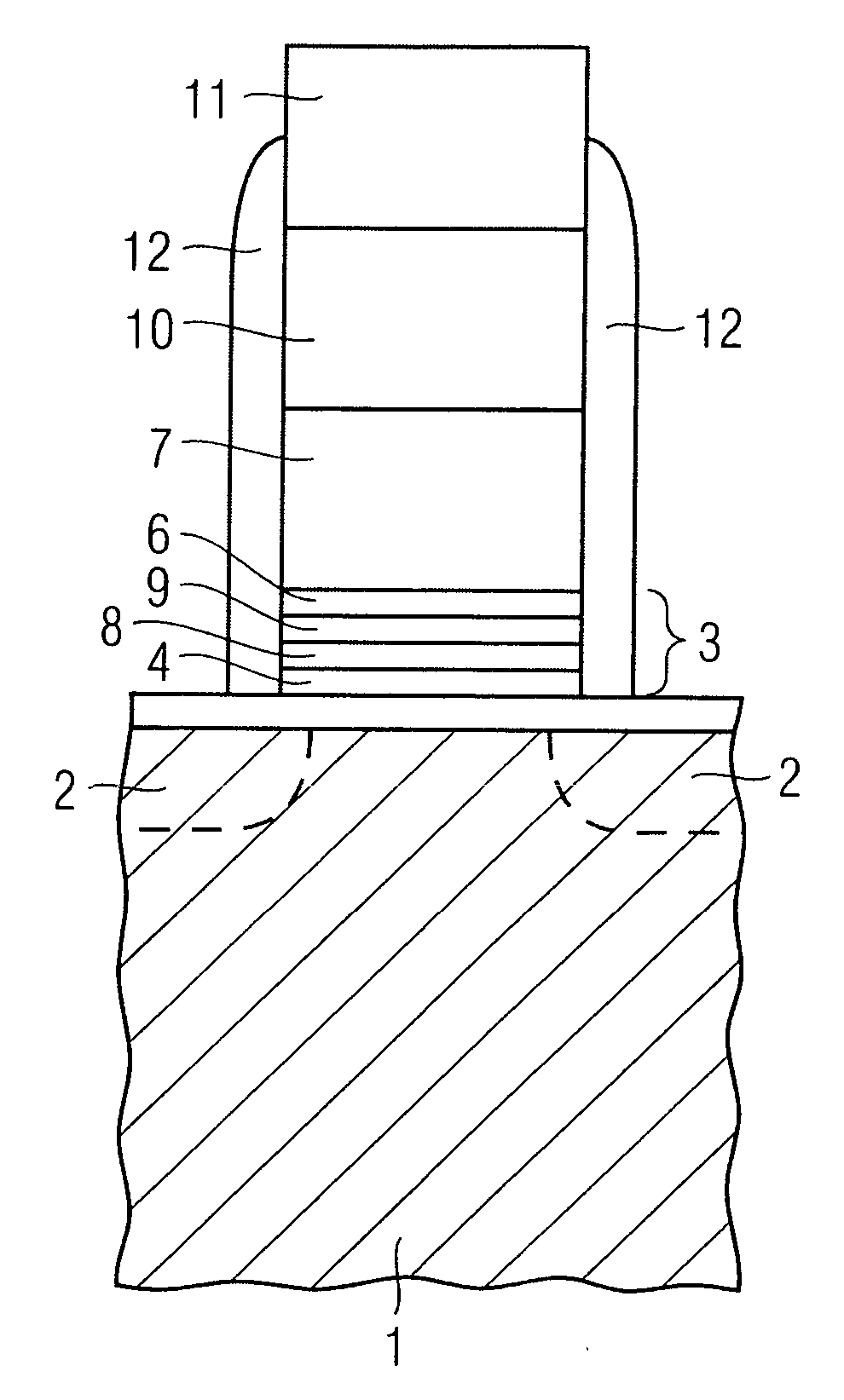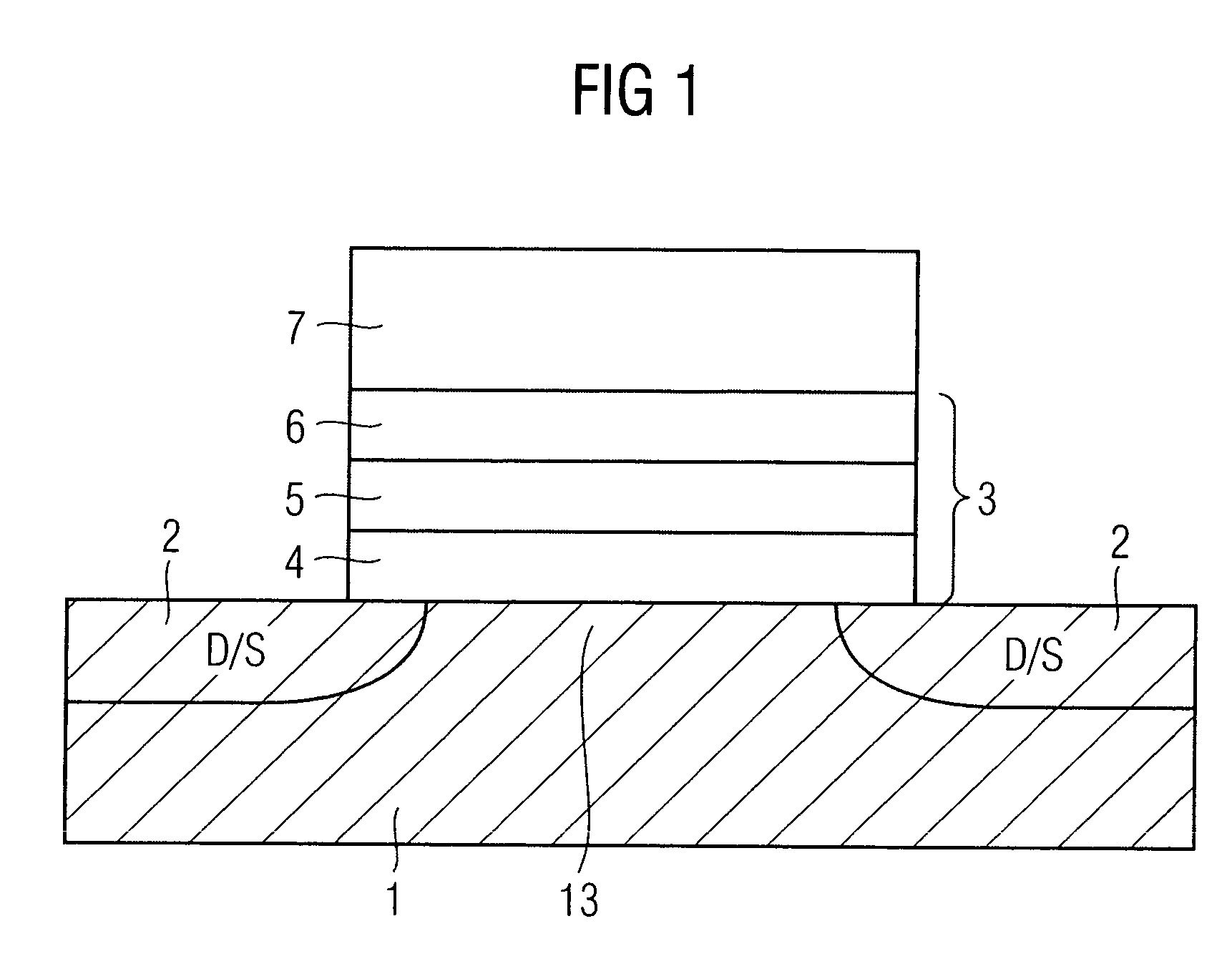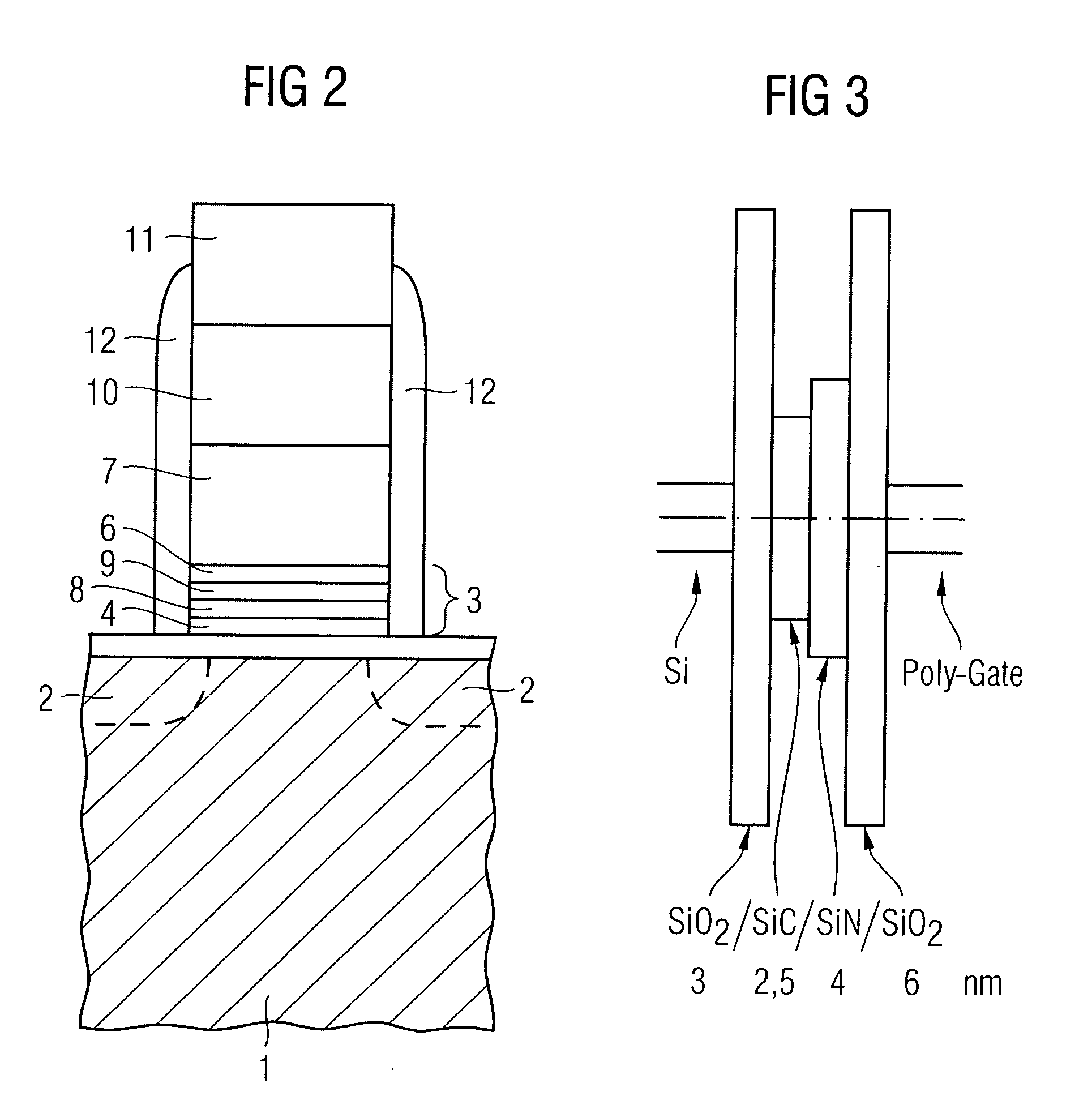Charge trapping semiconductor memory element with improved trapping dielectric
a charge-trapping semiconductor and memory element technology, applied in the direction of semiconductors, electrical devices, transistors, etc., can solve the problems of unsatisfactory data retention, restricted data retention, and increased leakage current, and achieve the effect of improving data retention and charge-trapping memory cell efficiency, and allowing further miniaturization of charge-trapped memory cells
- Summary
- Abstract
- Description
- Claims
- Application Information
AI Technical Summary
Benefits of technology
Problems solved by technology
Method used
Image
Examples
Embodiment Construction
[0026]FIG. 1, shows a vertical section through a conventional semiconductor memory element of an SONOS flash memory structure in planar geometry. Accordingly, in a p-doped silicon substrate n-doped source / drain regions are formed at a surface of the silicon substrate. Between the n-doped source / drain regions there is a channel region. Above the channel region is a multilayer gate dielectric in the form of a layer stack. The gate dielectric consists of a first oxide layer, which is a tunneling layer, a nitride memory layer for trapping charge carriers from the substrate and a second oxide layer. Above the second oxide layer there is a gate terminal, which comprises a polysilicon gate. The polysilicon gate is generally connected to a gate supply voltage, while at the same time the substrate is grounded.
[0027]FIG. 2, shows a vertical section through a semiconductor memory element according to the invention, wherein the gate dielectric has a quadruple layer structure. To avoid unnecess...
PUM
 Login to View More
Login to View More Abstract
Description
Claims
Application Information
 Login to View More
Login to View More - R&D
- Intellectual Property
- Life Sciences
- Materials
- Tech Scout
- Unparalleled Data Quality
- Higher Quality Content
- 60% Fewer Hallucinations
Browse by: Latest US Patents, China's latest patents, Technical Efficacy Thesaurus, Application Domain, Technology Topic, Popular Technical Reports.
© 2025 PatSnap. All rights reserved.Legal|Privacy policy|Modern Slavery Act Transparency Statement|Sitemap|About US| Contact US: help@patsnap.com



